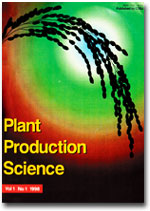Volume 2, Issue 1
Displaying 1-15 of 15 articles from this issue
- |<
- <
- 1
- >
- >|
-
1999 Volume 2 Issue 1 Pages 3-9
Published: 1999
Released on J-STAGE: January 31, 2008
Download PDF (971K) -
1999 Volume 2 Issue 1 Pages 10-11
Published: 1999
Released on J-STAGE: January 31, 2008
Download PDF (438K) -
1999 Volume 2 Issue 1 Pages 12-13
Published: 1999
Released on J-STAGE: January 31, 2008
Download PDF (653K) -
1999 Volume 2 Issue 1 Pages 14-20
Published: 1999
Released on J-STAGE: January 31, 2008
Download PDF (861K) -
1999 Volume 2 Issue 1 Pages 21-24
Published: 1999
Released on J-STAGE: January 31, 2008
Download PDF (797K) -
1999 Volume 2 Issue 1 Pages 25-31
Published: 1999
Released on J-STAGE: January 31, 2008
Download PDF (868K) -
1999 Volume 2 Issue 1 Pages 32-36
Published: 1999
Released on J-STAGE: January 31, 2008
Download PDF (727K) -
1999 Volume 2 Issue 1 Pages 37-46
Published: 1999
Released on J-STAGE: January 31, 2008
Download PDF (1211K) -
1999 Volume 2 Issue 1 Pages 47-50
Published: 1999
Released on J-STAGE: January 31, 2008
Download PDF (1493K) -
1999 Volume 2 Issue 1 Pages 51-52
Published: 1999
Released on J-STAGE: January 31, 2008
Download PDF (511K) -
1999 Volume 2 Issue 1 Pages 53-57
Published: 1999
Released on J-STAGE: January 31, 2008
Download PDF (831K) -
1999 Volume 2 Issue 1 Pages 58-64
Published: 1999
Released on J-STAGE: January 31, 2008
Download PDF (895K) -
1999 Volume 2 Issue 1 Pages 65-66
Published: 1999
Released on J-STAGE: January 31, 2008
Download PDF (397K) -
1999 Volume 2 Issue 1 Pages 67-70
Published: 1999
Released on J-STAGE: January 31, 2008
Download PDF (639K) -
1999 Volume 2 Issue 1 Pages 71-76
Published: 1999
Released on J-STAGE: January 31, 2008
Download PDF (765K)
- |<
- <
- 1
- >
- >|
